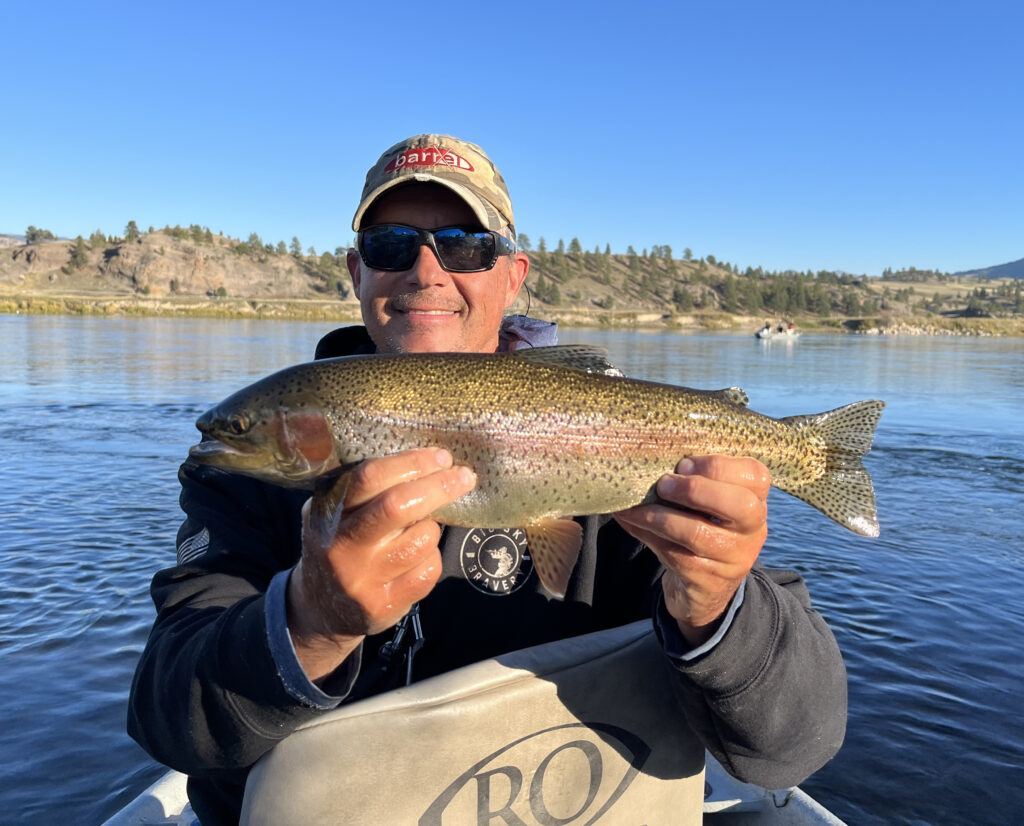Waters We Fish

YELLOWSTONE RIVER
The Yellowstone River, spilling out of the Yellowstone Lake in the aptly named national park, is the longest undammed river in the contiguous United States, stretching 692 miles through Wyoming, Montana, and North Dakota. Around 100 of those miles offer some incredibly diverse trout habitats ranging from riffles, runs, buckets, pools, turbulent seams and placid flats. From the turbulent canyon near the park, to the stunning Paradise Valley, to the plains near Big Timber, there is something for everyone. As a large freestone, this water is particularly susceptible to the spring runoff, usually around May or June, typically making it unfishable. The best times to fish are early spring, summer and fall.
MADISON RIVER
The Madison River is a classic blue ribbon fishery here in the Rockies. The Firehole and Gibbon Rivers form the headwaters in Yellowstone National Park. Apart from the fantastic fishing, it’s known for its stunning scenery through the mountainous Madison Valley. The “Upper” section, tumbles down a rocky riverbed loaded with all the classic Western insects. Weed beds, buckets and runs define the “Lower” portion. As a dam controlled river, spring runoff hits softer making the Madison an option most of the year.


GALLATIN RIVER
The Gallatin River is a picturesque waterway originating in the North West corner of Yellowstone National Park. It flows almost 120 miles, cutting through meadows, canyons and valleys before merging with the Madison in Three Forks. Influenced by the natural topography, this freestone offers a smorgasbord of runs, riffles, pools, pocket water, cutbanks and sandbars. Smaller in stature, the majority of fishing is done on foot. However, floating is an option in areas upstream of the confluence with the Madison. Without dam control, the river becomes high and dirty for short time each spring, but fishes well the rest of the year.
JEFFERSON RIVER
This tributary to the Missouri River was the route of Lewis and Clark on their way to find the Pacific Ocean. Formed by the Beaverhead, Big Hole and Ruby rivers, the “Jeff” cuts through our rich agricultural communities, canyons and cottonwood forests before helping form the Missouri River. Many sections remains untouched and wild, providing anglers with a glimpse of Old Montana. We consider this a seasonal fishery, but when water conditions allow, it’s a wonderful place to find solitude, critters, and trout.


MISSOURI RIVER
The “Mighty Mo” originates at the confluence of the Jefferson, Madison and Gallatin rivers in the town of Three Forks. There are multiple sections of this river that produce trout, but the most famous is around Craig, MT below Holter Dam. It just seems like this river was designed specifically to manufacture big healthy trout. Scuds, sowbugs, crayfish as well as the standard tailwater aquatic insects are on the menu. The “Mo” doesn’t experience runoff as hard as some other options closer to Bozeman, so we typically fish it in the spring. The fall is also a wonderful time to get up there.
OTHER OPTIONS
We are blessed to be surrounded by some fairly large trout rivers here in Bozeman, which tend to garner the most attention. However, there are many other smaller water options around the area such as the East Gallatin River, Bridger Creek, Shields River, and too many others to list. Big fish don’t necessarily live in big water, so it can be fun and interesting to experience something different. If you are up for a challenge, we also have access to a few private spring creeks, such as Depuy’s, Armstrong’s and Nelson’s. With all the options, anglers rarely get bored, but rather overwhelmed with all the choices.

